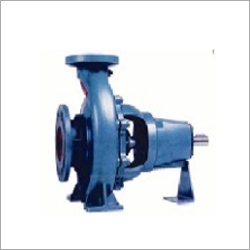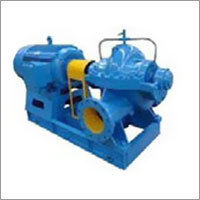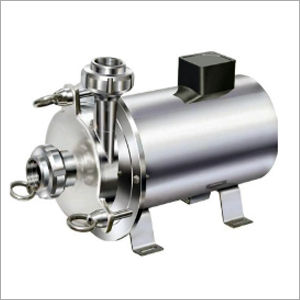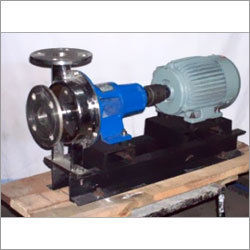
Industrial Centrifugal Pumps
Product Details:
X
Industrial Centrifugal Pumps Price And Quantity
- 1 Unit
Industrial Centrifugal Pumps Trade Information
- Cash Against Delivery (CAD) Cash on Delivery (COD) Cash in Advance (CID) Cheque Cash Advance (CA)
- 10 Unit Per Day
- 7-30 Days
- Yes
- Sample costs shipping and taxes has to be paid by the buyer
- Australia South America Western Europe Middle East Central America Africa Asia Eastern Europe North America
- All India
Product Description
A centrifugal pump is a type of machine used to transport fluids by converting the mechanical energy from a motor or engine into kinetic energy in the fluid. This pump works by spinning an impeller (a rotating component with curved blades) inside a casing or volute. When the impeller rotates, it creates a centrifugal force that draws the fluid into the center of the impeller and then propels it outwards towards the casing.
Centrifugal pumps are commonly used in various industries, including oil and gas, chemical, pharmaceuticals, and water treatment. They are particularly useful for transferring large volumes of low-viscosity fluids, such as water, gasoline, and chemical solutions. They are also typically more efficient and require less maintenance than other types of pumps.
There are various types of centrifugal pumps, including single-stage, multi-stage, axial-flow, and mixed-flow pumps. Single-stage pumps have a single impeller and are used for low-pressure applications, while multi-stage pumps have multiple impellers and are used for high-pressure applications. Axial-flow pumps have a propeller-like impeller and are used for pumping large volumes of fluid at low pressures, while mixed-flow pumps have a combination of axial and radial flow and are used for moderate-pressure applications.
Proper maintenance and operation of a centrifugal pump are essential for its long-term reliability and efficiency. This includes regular inspection and cleaning of the pump and its components, monitoring of fluid levels and flow rates, and addressing any issues or malfunctions as soon as they arise.
Frequently Asked Questions:
1. What is the difference between a centrifugal pump and a positive displacement pump?
Ans: A centrifugal pump works by using centrifugal force to move fluid, while a positive displacement pump works by trapping fluid between moving parts and then forcing it through the pump. Centrifugal pumps are generally used for high-flow, low-pressure applications, while positive displacement pumps are better suited for high-pressure, low-flow applications.
2. How do I choose the right centrifugal pump for my application?
Ans: When choosing a centrifugal pump, you should consider factors such as the fluid being pumped, the required flow rate and pressure, the operating conditions (e.g. temperature and viscosity), and any other specific requirements for your application. Consulting with a pump manufacturer or engineer can also be helpful in selecting the right pump for your needs.
3. What is cavitation in centrifugal pumps?
Ans: Cavitation occurs when the pressure in a centrifugal pump drops below the vapor pressure of the fluid being pumped, causing bubbles or cavities to form in the fluid. This can damage the pump and reduce its efficiency. To prevent cavitation, it is important to ensure that the pump is properly primed and that the flow rate and pressure are within the pump's specified range.
4. How often should I perform maintenance on my centrifugal pump?
Ans: The frequency of maintenance for a centrifugal pump depends on factors such as the pump's operating conditions, the type of fluid being pumped, and the manufacturer's recommendations. In general, regular inspections and cleaning are recommended, and any issues or malfunctions should be addressed promptly to prevent further damage.
5. What are some common problems with centrifugal pumps?
Ans: Common problems with centrifugal pumps include cavitation, leaking seals or gaskets, excessive vibration, and impeller damage. These issues can be caused by factors such as improper operation or maintenance, wear and tear, or problems with the pump's components. Regular inspections and prompt attention to any issues can help prevent these problems and ensure the long-term reliability and efficiency of your centrifugal pump.
Tell us about your requirement

Price:
Quantity
Select Unit
- 50
- 100
- 200
- 250
- 500
- 1000+
Additional detail
Mobile number
Email







 Send Inquiry
Send Inquiry Send SMS
Send SMS Call Me Free
Call Me Free
